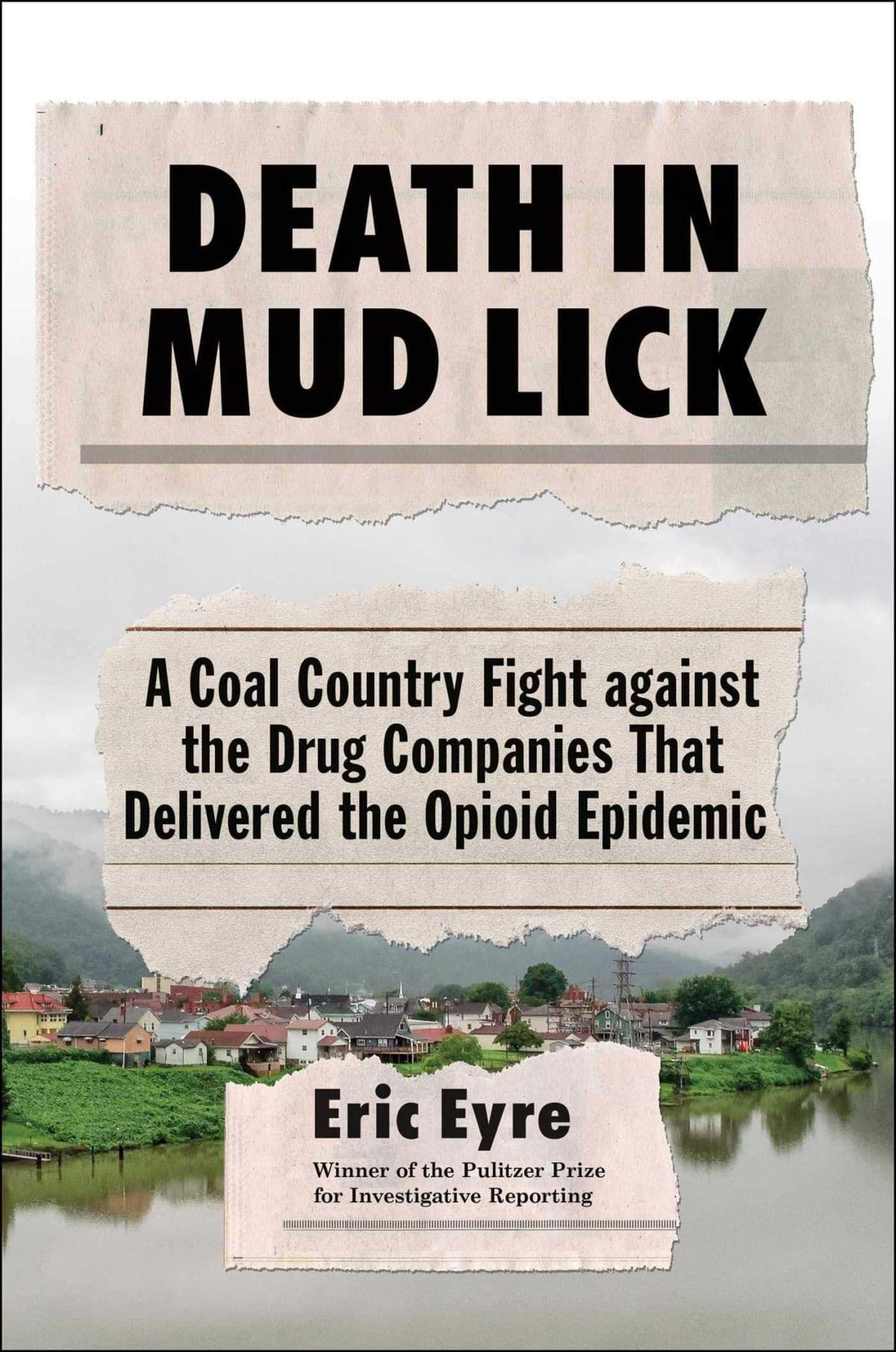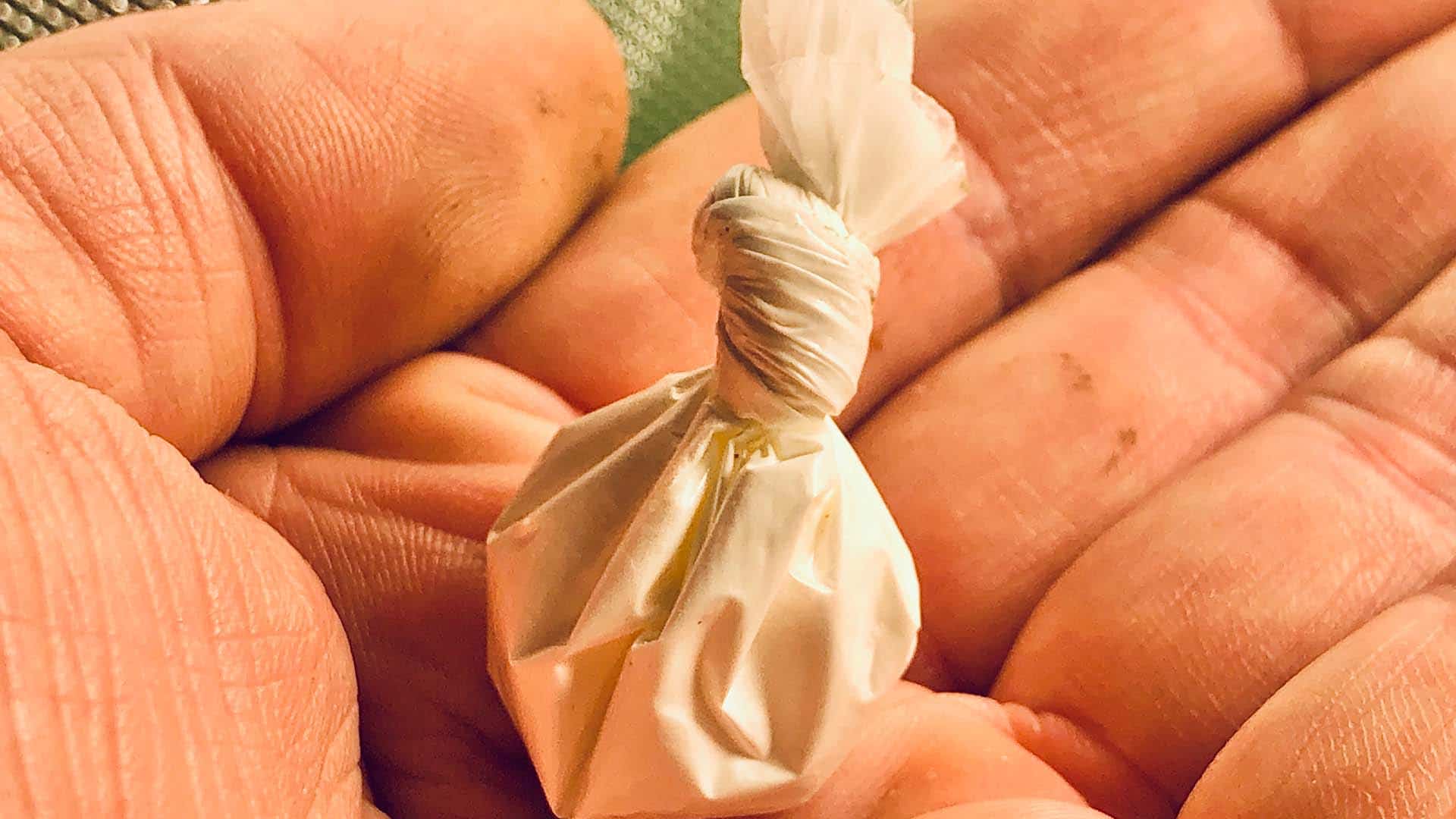In his new book, “Death in Mud Lick: A Coal County Fight Against the Drug Companies That Delivered the Opioid Epidemic,” Eric Eyre outlines in meticulous and gripping detail how, as a reporter for The Charleston Gazette-Mail in West Virginia, he uncovered avarice and corruption on a massive scale. Through years of requesting and combing through documents, making connections in his rural community, and relentlessly pursuing higher-ups, Eyre shows how the nation’s largest drug corporations saturated West Virginia’s coalfields with huge shipments of oxycodone and hydrocodone — leading the state to the highest overdose rates in the country.

BOOK REVIEW — “Death in Mud Lick: A Coal Country Fight against the Drug Companies That Delivered the Opioid Epidemic,” by Eric Eyre (Scribner, 304 pages).
Though the story of the opioid crisis is by now familiar to most readers, the layers of deception, corruption, and neglect by the drug distributors, the Drug Enforcement Administration, and the state’s pharmacy board that Eyre peels back are stunning in their details. The book offers a fresh perspective on the drug distributors’ greed that led the country into the epidemic and the tragic consequences for so many families who have been affected by it.
Even for readers who feel they are fully schooled in the epidemic, “Death in Mud Lick” will be revelatory as it shows how three underdogs — a reporter working for a small-town newspaper, a woman mourning the overdose deaths of loved ones, and a scrappy lawyer — were able to take on some of the biggest forces in this country and prevail.
The book starts in 2005 with Debbie Preece, a former drug user whose family had been notorious in Mingo County, West Virginia, for dealing, confronting the overdose death of her brother. Determined to get to the bottom of what happened to him, Preece enlisted a lawyer in her search for answers. She refused to settle the case against the doctor who prescribed her brother and hundreds of others pain pills. Patients would take a van ride from all over West Virginia to his pharmacy in Marietta, Ohio, where the doctor would toss users what they wanted, in heaping quantities, no questions asked.
Eyre later meets Preece, who inspired him to report a series of stories for his small-town paper about how one tiny pharmacy in Kermit, West Virginia — a town of only 382 people — was shipped 13 million pills in six years. Eyre’s articles, which he began writing in 2013, hurtled him and his paper into a battle for information from the country’s three largest drug distributors and won him a Pulitzer Prize for investigative journalism — the smallest paper to ever win the prize in that category.
Eyre takes us back to the earliest days of the opioid crisis, when he received a tip that Cardinal Health, one of the largest distributors, helped pay for the inaugural party of newly-elected West Virginia Attorney General Patrick Morrisey, who took office in 2013. Eyre also learned that Morrisey’s wife had been lobbying for Cardinal in Washington, making millions for her firm.
Despite these obvious conflicts of interest, Morrisey took over the state’s lawsuit that the previous state attorney general had initiated against Cardinal Health and another distributor, Amerisource Bergen, for illegally distributing millions of pills in West Virginia towns. Eyre argues that Morrisey should not have been at the helm of a lawsuit against a drug distributor he was so cozy with.
In retribution for the paper’s reporting, Morrisey launched a crusade against The Gazette-Mail, trying to discredit Eyre’s work and put the paper, already in financial peril, out of business by demanding financial statements and personnel records, implicitly threatening a lawsuit.
What raised Morrisey’s ire was that Eyre, his editors, and his publisher went to court to fight to unseal documents that would show how Cardinal had been the top seller of prescription painkillers in West Virginia, despite the fact that Morrisey’s wife was Cardinal’s lobbyist and he was heavily involved in the state’s suit against the drug distributor. Ultimately, Eyre’s reporting laid out for the public how Morrisey had not recused himself from the suit, despite his claims to the contrary.
Eyre also documents how another major drug distributor, the McKesson Corporation, shoveled millions of opioid pills into Sav-Rite, Kermit’s sole pharmacy.
At the Sav-Rite, “Employees were literally throwing prescription bags over the counter to keep pace with the throng of customers,” Eyre writes. “The pharmacy served ‘courtesy snacks’ — hot buttered popcorn was a favorite — to make the wait more bearable. The cash register drawer wouldn’t close, it was so full. You couldn’t find a spot in the parking lot, day or night. Cars six deep were backed up at the drive-through window.”
“Everyone knew Sav-Rite was a pill mill,” he adds. “Pill parties were thrown in the parking lot.”
In 2006 alone, the Kermit pharmacy received more than 3 million hydrocodone tablets, filling prescriptions at the rate of “one per minute.”
Shocking passages like this propel readers through Eyre’s arduous reporting journey and his accounts of the decimation of small West Virginia communities. For instance, as his newspaper sued to get its reporters’ hands on drug distributors’ court records detailing pill shipments to West Virginia, the companies fought unsuccessfully to elide 18 “words” that actually turned out to be numbers: “Big numbers. Numbers of pain pills,” Eyre writes.
He discovered that AmerisourceBergen “distributed 119 million doses of highly addictive drugs to West Virginia pharmacies between 2007 and 2012, or roughly 80 pills for every man, woman, and child in the state.”
Eyre, along with his readers, wonders, “Why hadn’t anyone done something to stop the massive flow of deadly pain pills?”
All told, 780 million pills flooded into a state with fewer than 1.8 million people between 2006 and 2012. During that time, 1,728 West Virginians fatally overdosed on those two pain killers, oxycodone and hydrocodone.
The West Virginia Board of Pharmacy and the Drug Enforcement Administration were supposed to be monitoring drugstores that ordered suspiciously high quantities of pills, but both agencies ignored the obvious. The DEA said it had too few inspectors and no leadership in West Virginia, while the pharmacy board tracked doctors’ prescriptions and drugstores’ dispensing but didn’t look at the distributors. In fact, David Potters, executive director of the pharmacy board, blamed not the pharmaceutical companies, distributors, or pharmacies or doctors: “I put the bull’s-eye on the individual that’s abusing the drug and seeking it and going out and getting it.”
Finally, in 2017, AmerisourceBergen and Cardinal Health settled with the West Virginia attorney general for $36 million without a trial, and they denied any wrongdoing. But Eyre points out that this settlement didn’t stop cities and towns from filing their own lawsuits. McKesson also eventually settled with the state, though it’s unclear for how much.
Meanwhile, a Congressional panel chastised McKesson and other drug distributors for not halting excessive shipments of pain pills into the state or raising any red flags about the drugs they sold being diverted into the black market. The panel also required the DEA to turn over documents revealing the total number of pills that flooded into the country while the agency ignored the problem, and The Gazette-Mail found itself back in court trying to get its hands on the information.
“Did what had happened in West Virginia happen in eastern Kentucky, southwest Ohio, the Ozarks of Missouri?” Eyre asks. “With the data, we could finally find out.”
When a judge ordered the DEA to share the statistics, they revealed that the drug distributors had overwhelmed America with 76 billion oxycodone and hydrocodone pills from 2006 to 2012.
Despite the complex interplay of forces and motivations running through “Death in Mud Lick,” Eyre tells the tale in a lucid, straightforward manner — and there are gripping moments, such as when someone anonymously drops a document on Eyre’s doorstep that he has been seeking and that cracks open a new round of articles.
And while the book may be grim in its details, it also offers hope in chronicling how The Gazette-Mail ultimately prevailed in its fight against the companies that jump-started the epidemic.
“Someday, I promised, the national pain pill numbers would get out, Eyre writes in the epilogue. “Now, they had, and the staggering details were helping the public understand the enormity of the epidemic. It had been a long journey into sunlight.”











